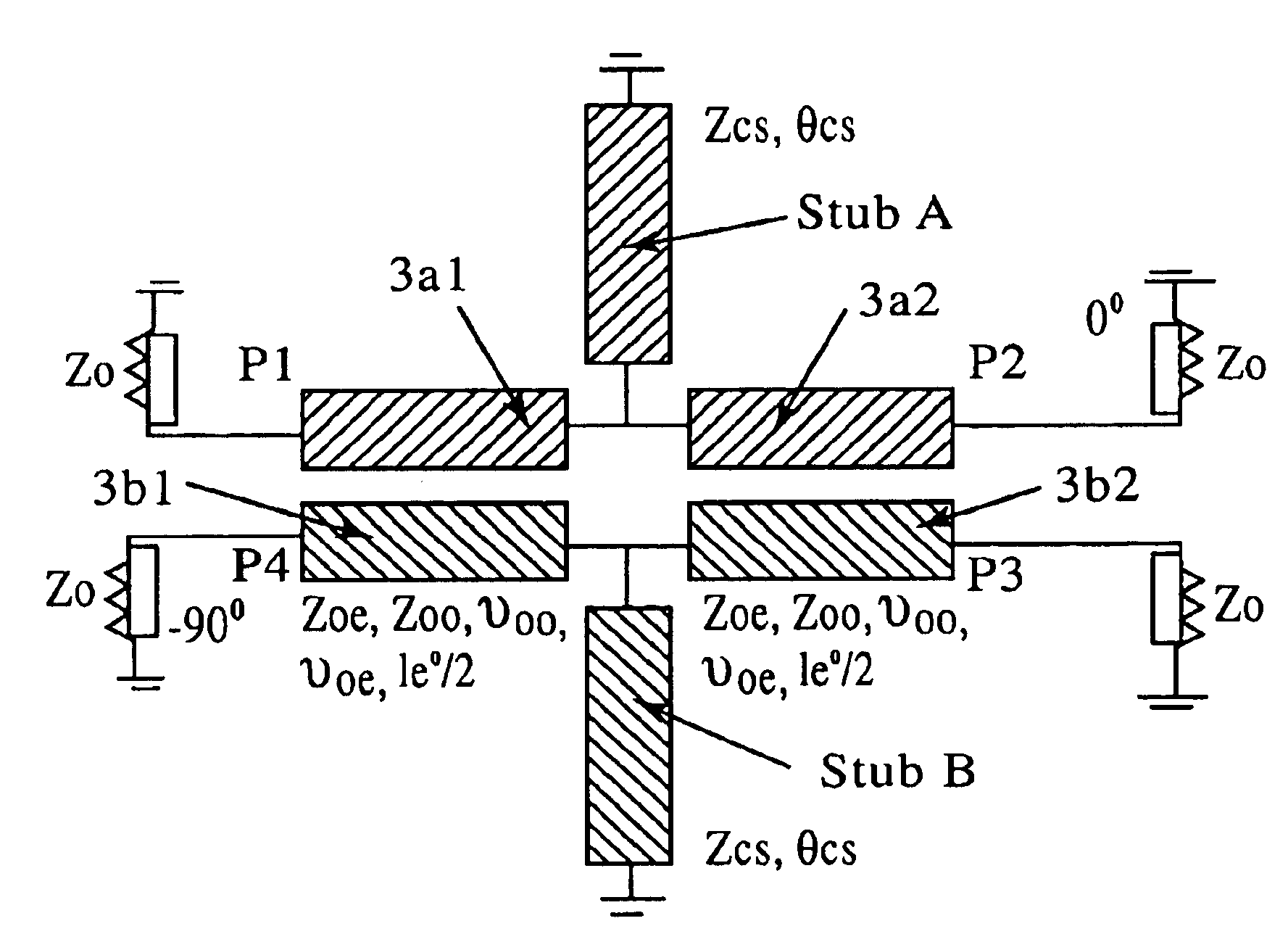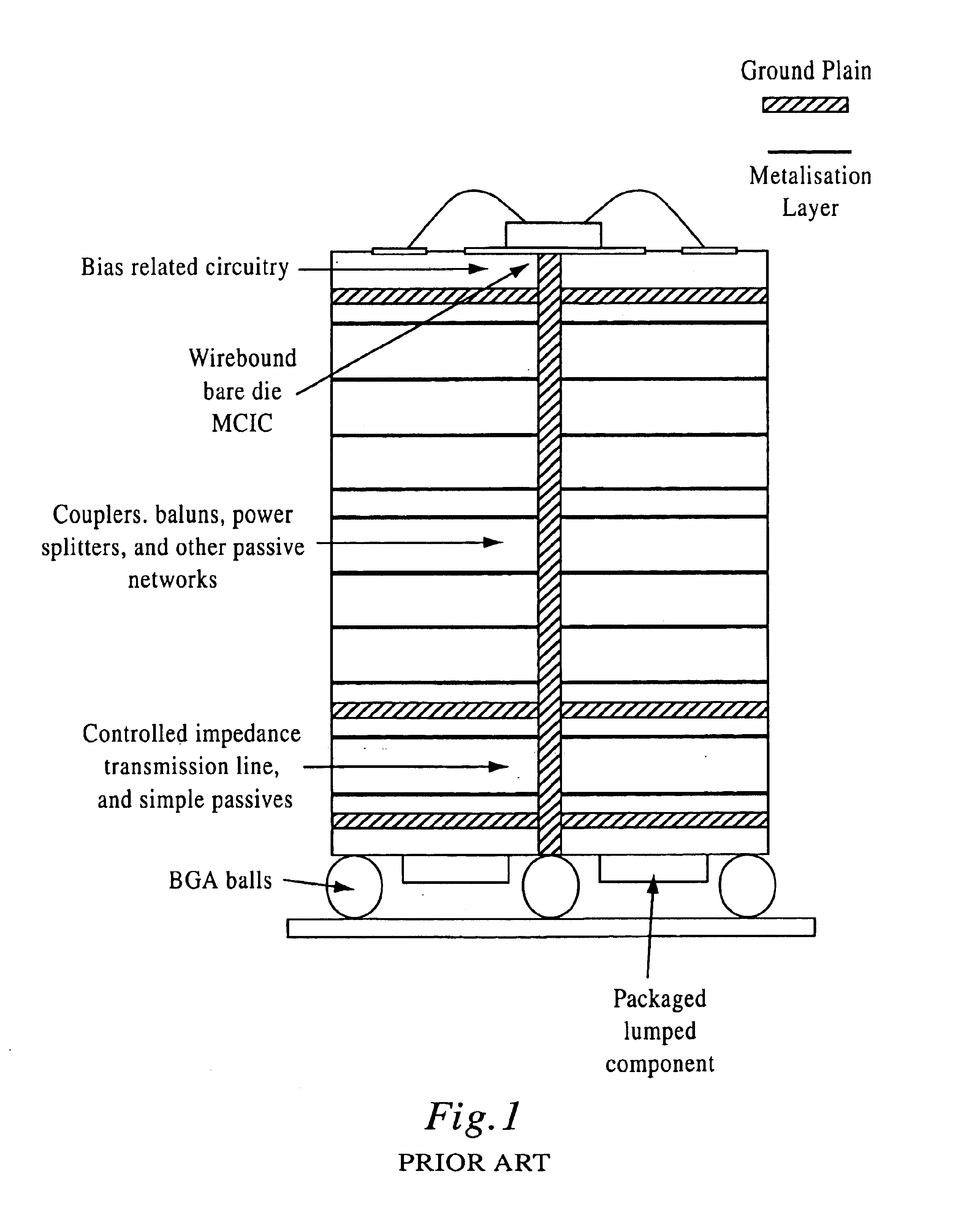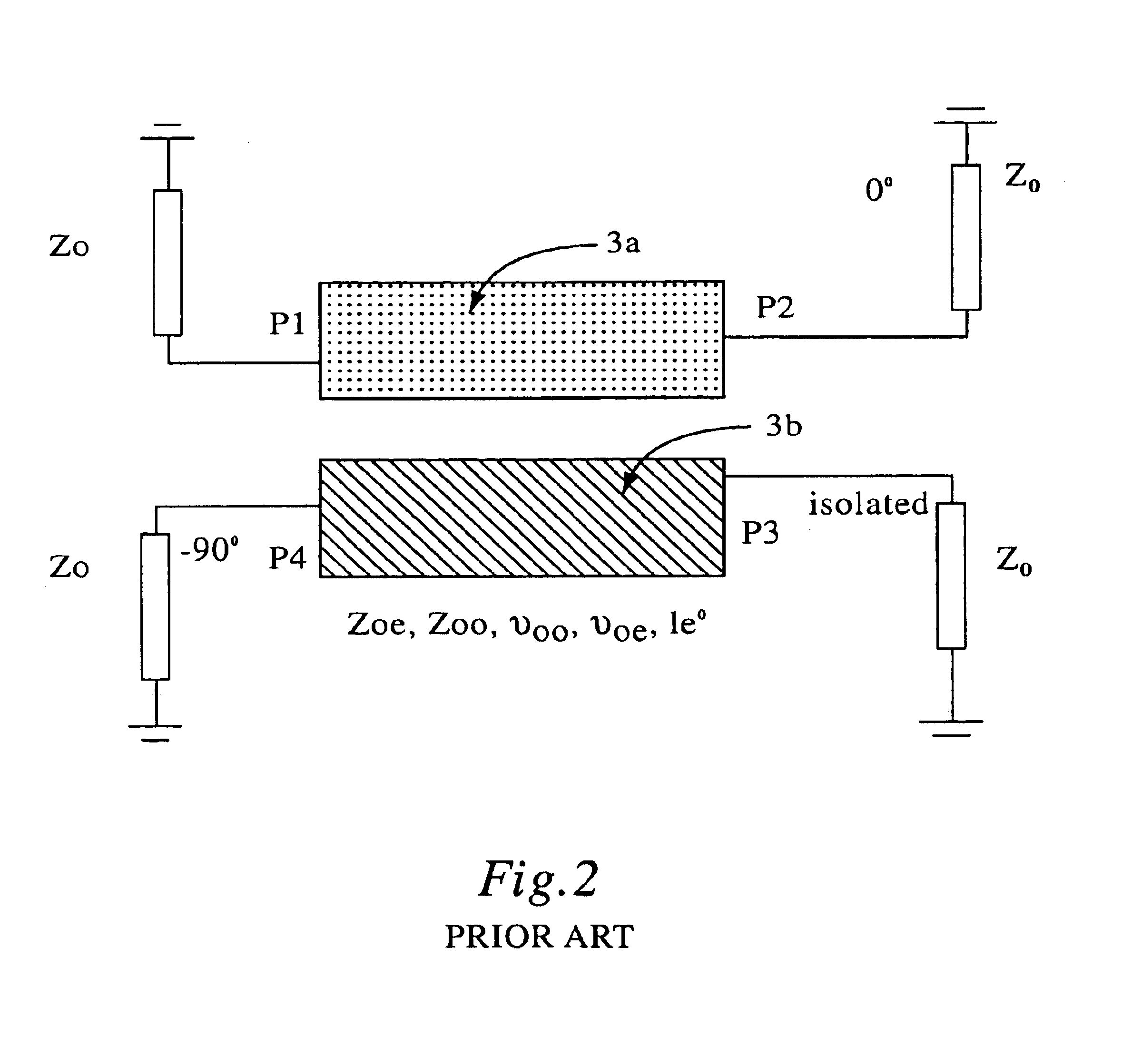Coupling device
a technology of couplers and couplers, which is applied in the direction of electrical equipment, multiple-port networks, waveguides, etc., can solve the problems of compromising the circuit area, the coupler will not perform properly, and the use of couplers in the 1-5 ghz range has been at the expense of a large area of occupation
- Summary
- Abstract
- Description
- Claims
- Application Information
AI Technical Summary
Benefits of technology
Problems solved by technology
Method used
Image
Examples
first embodiment (fig.6)
First Embodiment (FIG. 6):
[0062]Considering the first embodiment shown in FIG. 6, said at least one cover layer 4, 5 is covered by a second conductive layer 2′, and at least one short-circuit stub Stub A is connected between at least one of said electromagnetically coupled lines 3b (3b1, 3b2) and said second conductive layer. Stated in other words, two stubs Stub A and Stub B are connected to the arrangement, one stub being connected to a respective one of said coupled lines.
[0063]It is to be noted that in case an even number of electromagnetically coupled lines is provided (as in FIG. 6), the number of short-circuit stubs connected to said first conductive layer 3a (3a1, 3a2) is equal to the number of short-circuit stubs connected to said second conductive layer 3b (3b1, 3b2).
[0064]Furthermore, as shown in FIG. 6, said short-circuit stub and / or stubs is / are connected to an electromagnetically coupled line at half the electrical length of said line (le° / 2). However, this is not nece...
second embodiment (fig.7)
Second Embodiment (FIG. 7):
[0073]The homogeneity of the stripline coupler is disturbed by the addition of the short-circuit stub. However, by the use of a principle that may be referred to as “Capacitors-to-Ground”, and described in patent application no. PCT / EP01 / 02249 by the same inventors, one can rectify this problem and preserve overall performance. The disclosure of C this earlier document is incorporated herein by reference.
[0074]In brief, according to this principle, at least one capacitor C1, C2, C3, C4 is connected between a first end of at least one of said at least two lines 3a, 3b and said first conductive layer 2 (for microstrip couplers). In case of stripline couplers, additionally or alternatively, at least one capacitor C1, C2, C3, C4 is connected between a first end of at least one of said at least two lines 3a, 3b and said second conductive layer 2′.
[0075]As regards the capacitors, a respective capacitor C1, C4 is constituted by a conductive member Cp1, Cp4 facing...
PUM
 Login to View More
Login to View More Abstract
Description
Claims
Application Information
 Login to View More
Login to View More - R&D
- Intellectual Property
- Life Sciences
- Materials
- Tech Scout
- Unparalleled Data Quality
- Higher Quality Content
- 60% Fewer Hallucinations
Browse by: Latest US Patents, China's latest patents, Technical Efficacy Thesaurus, Application Domain, Technology Topic, Popular Technical Reports.
© 2025 PatSnap. All rights reserved.Legal|Privacy policy|Modern Slavery Act Transparency Statement|Sitemap|About US| Contact US: help@patsnap.com



